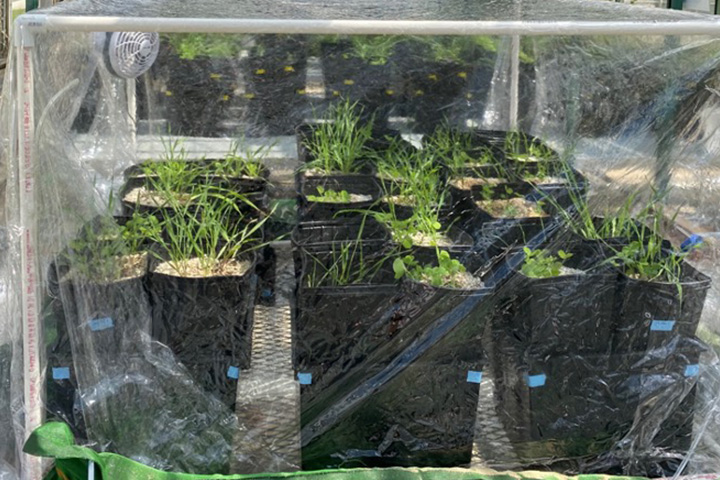Diversifying cover crops to sequester carbon in agricultural soils
Diversifying cover crops to sequester carbon in agricultural soils
Diversifying cover crops to sequester carbon in agricultural soils
Program: Carbon Neutrality Acceleration Program
Program details » | All Carbon Neutrality Acceleration Program projects »

Could a legume-grass cover crop mixture finally solve the soil-carbon dilemma?
Project Team
Jennifer Blesh, SEAS (PI)
Kent Connell, SEAS
Timothy James, Ecology & Evolutionary Biology
Julie Doll, Michigan State University
Project Summary
Agricultural cover crops are non-harvested crops grown in rotation between primary crops. When cover crops decompose, they contribute organic matter that contains important nutrients to the soil, reducing the need for synthetic fertilizers and thus lowering the overall carbon-cost of row-crop farming. But is there a way also to conserve that organic matter to sequester carbon in the soil long-term? This question is at the heart of what researchers call the “soil carbon dilemma.”
Recognizing that different types of soil organic matter serve different functions, this research team aims to use crop diversification to optimize both the carbon capture and the nutrient contributions of cover crops. The researchers hypothesize that by planting legumes (which contribute nutrients and may sequester carbon in the soil) alongside grasses (which capture the nutrients added by legumes and make them available for future crops), they can maximize the ecosystem services provided.
Using soil from farms across Michigan and a stable isotope tracer, the team will track the movement of carbon from plant to soil and create field-level estimates of cover-cropping benefits for each individual farmer who participates in the study. In addition, the researchers will hold round-table discussions with farmers across the region to understand the real-world variability farmers incorporate into their decision-making.
The researchers hope that by forging meaningful relationships with regional farmers, they can bolster the adoption of cover-cropping in the Midwest. If uptake rose to just 10% of corn and soybean fields in the region, the CO2 savings would be equivalent to removing over a million cars from the road.
This team received a $151,000 CNAP faculty research grant in 2021.
- Publication: A legume-grass cover crop builds mineral-associated organic matter across variable agricultural soils - Soil Biology and Biochemistry, 203
- Article: Cover crop mixes can cut carbon emissions from farms, study says - Great Lakes Echo